Salar Jung Museum in Hyderabad exceeded my expectations with the variety and the nature of its collections. Everyone visiting the city should spend a minimum of half-a-day here. While the other two important museums in India I had visited earlier, the National Museum in Janpath, New Delhi and the Indian Museum, Kolkata (Imperial Museum at Calcutta) were established or benefitted with the collections of Indian Government (and earlier by British India), the Salar Jung museum owes its founding and breathtaking artefacts to a private (aristocratic) family, mainly the Prime Minister of Hyderabad during the Nizam’s rule, Mr Mir Yousuf Ali Khan aka Salar Jung III (1889–1949).
The present-day building was inaugurated on 23rd July 1963, by India’s first Prime Minister Shri Jawaharlal Nehru. Earlier the collections were exhibited in a private museum in the Salar Jung’s Palace Diwan Devdi. Mr Salar Jung III was a man of fine taste, who had travelled around the world and collected furniture, fashion, artefacts, jewels, clocks, Holy Quran, and many more items. Though he was never married, his collections of women’s fashion and jewellery were exquisite.
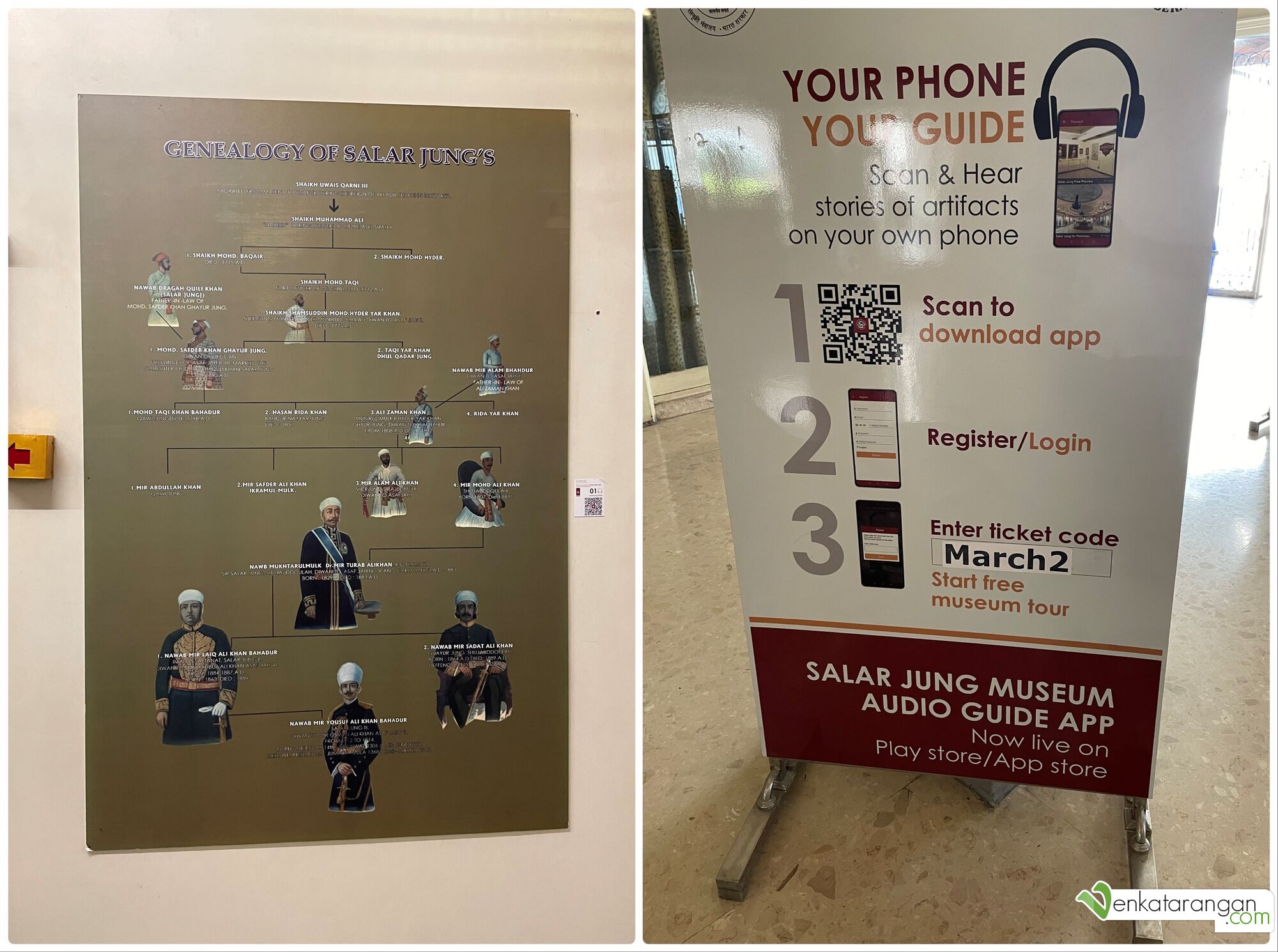
Genealogy of Salar Jung’s and Audio Guide app
I had visited the museum during a Sunday (3rd of April 2022) afternoon. Ticket fee for Indian Adults are Rs 20. You may want to buy the Rs 50 ticket for Photography (Camera/mobile), there are many things of interest that you will want to be capturing. I hired the services of an official guide, Mr Baskar Reddy, who was knowledgable, friendly, and spoke reasonable English. He conducted the 90+ minutes tour (charge of Rs 350) without any rush and was interested in helping us discover the beauty of the museum. I will recommend engaging a guide here.
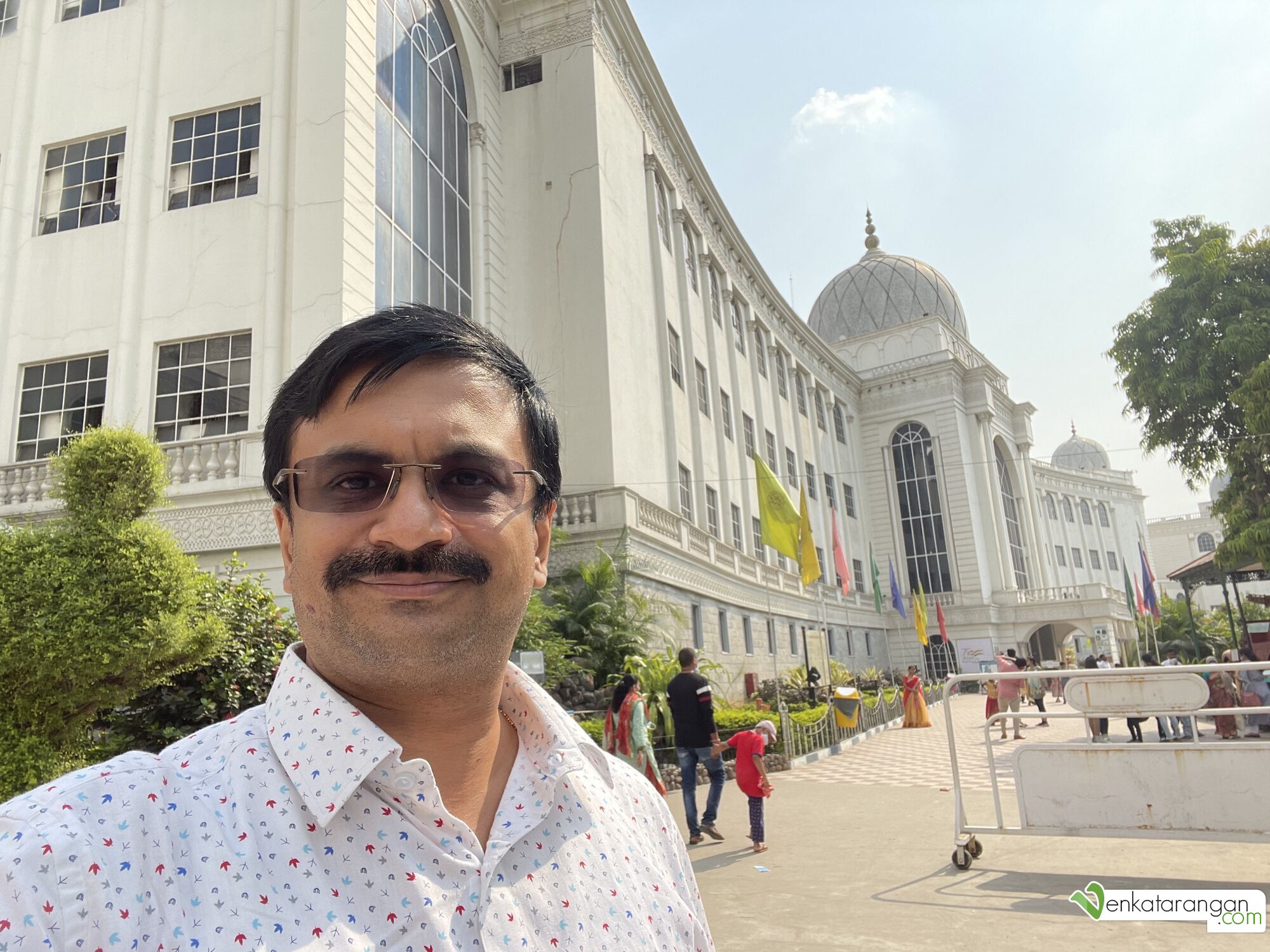
Venkatarangan Thirumalai visiting the Salar Jung museum on the 3rd of April 2022
The museum has over thirty-eight galleries on two floors with thousands of artefacts on display. Noteworthy are the Veiled Rebecca marble statue which exhibits the illusion of stone being a fabric clinging to a body, the 19th-century wooden “double sculpture” called Mephistopheles and Margaretta, the Ivory carved horse carriage gifted by the first President of India Dr Rajendra Prasad to the museum, the ivory collections, the musical clock that chimes every hour, the european paintings and more. The collections included religious artefacts and symbols from Islam, Christianity, and Hinduism – for example Dasavaratharam and Quranic verses can be seen in seperate ceremonial swords.

Full body Armour, Mughal Arm-guard, 19th Century Matchlock guns, Nepal Khukari, Elephant-Goad, and Tabar of Shahjahan
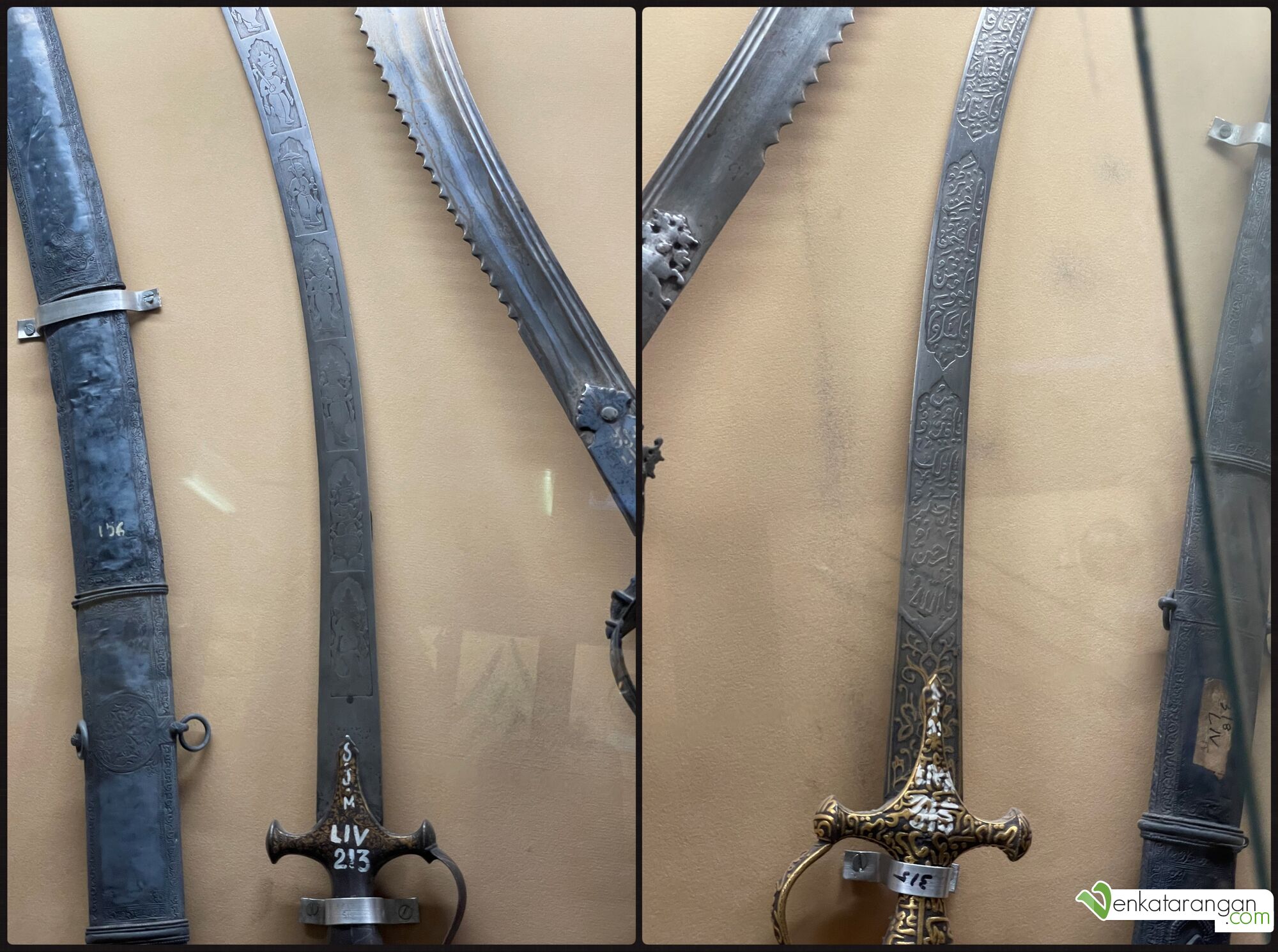
Ceremonial swords sporting verses from the Holy Quran, and Lord Vishnu’s Dasavaratharam
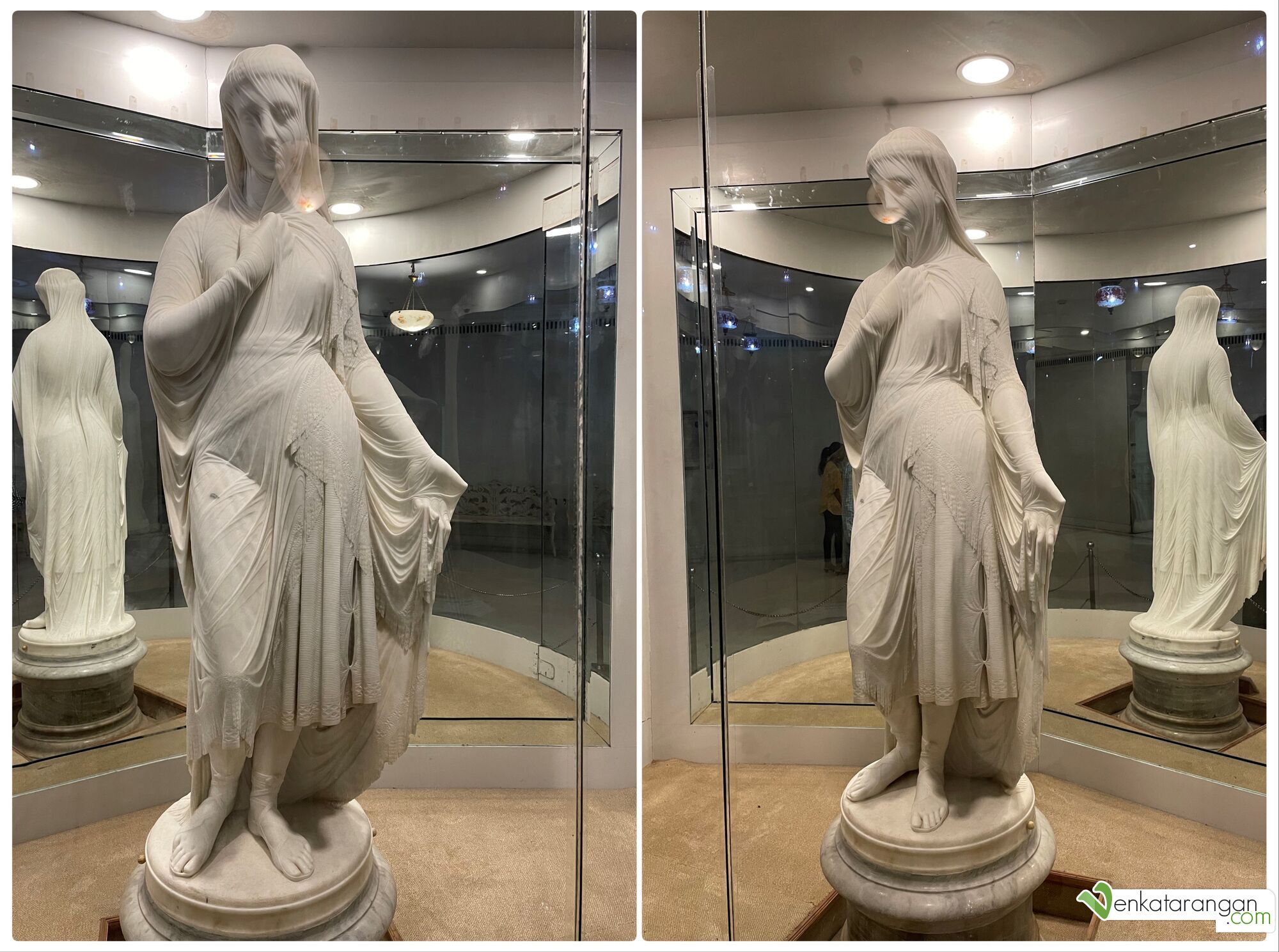
The famous Veiled Rebecca by Giovanni Maria Benzoni, depecting a scene from the Hebrew bible. The work highlighted the artistry of the sculptor since achieving the illusion that stone is fabric clinging to a body requires a high level of skill.
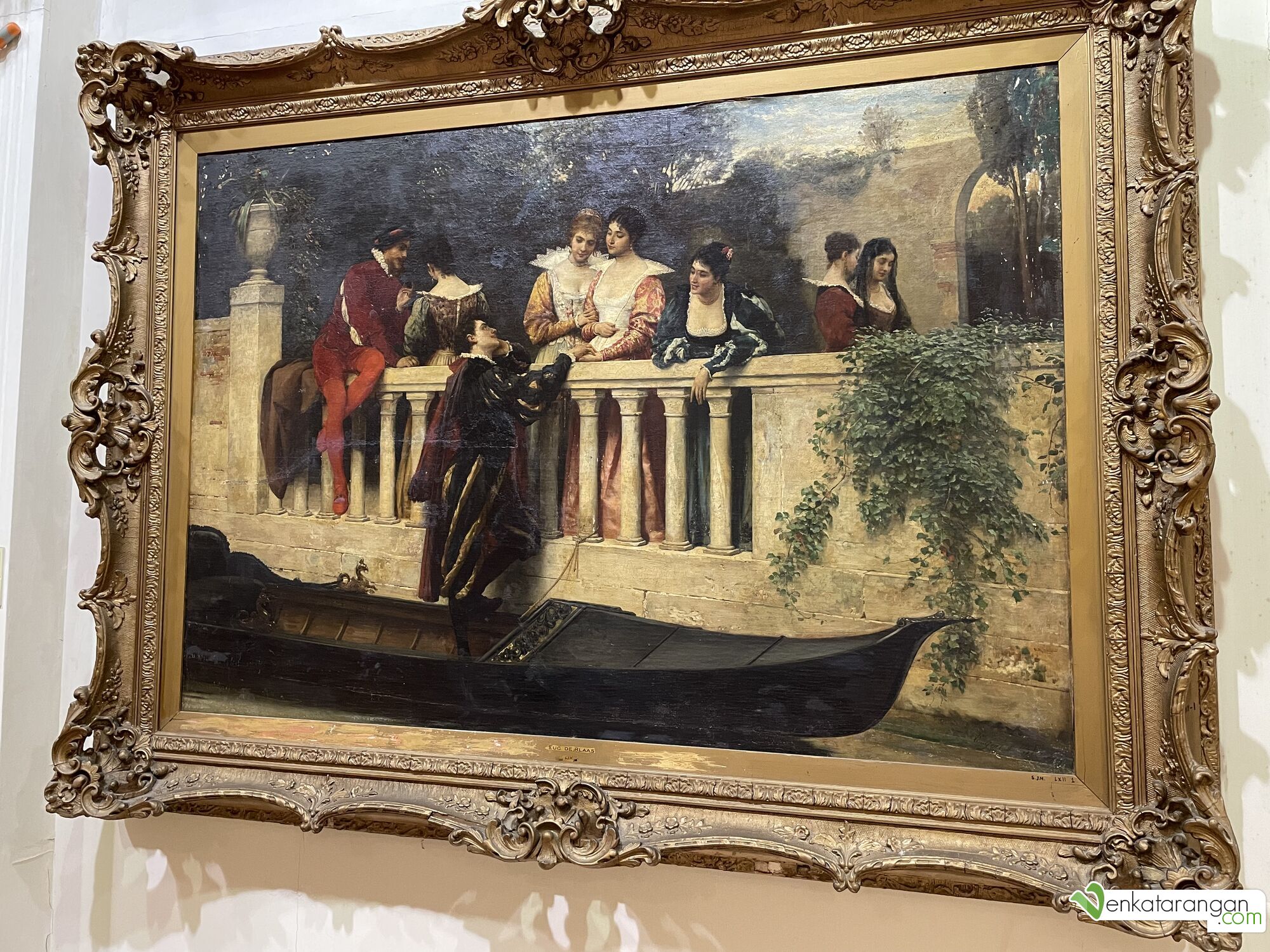
An evening in venice showing a man talking to the ladies
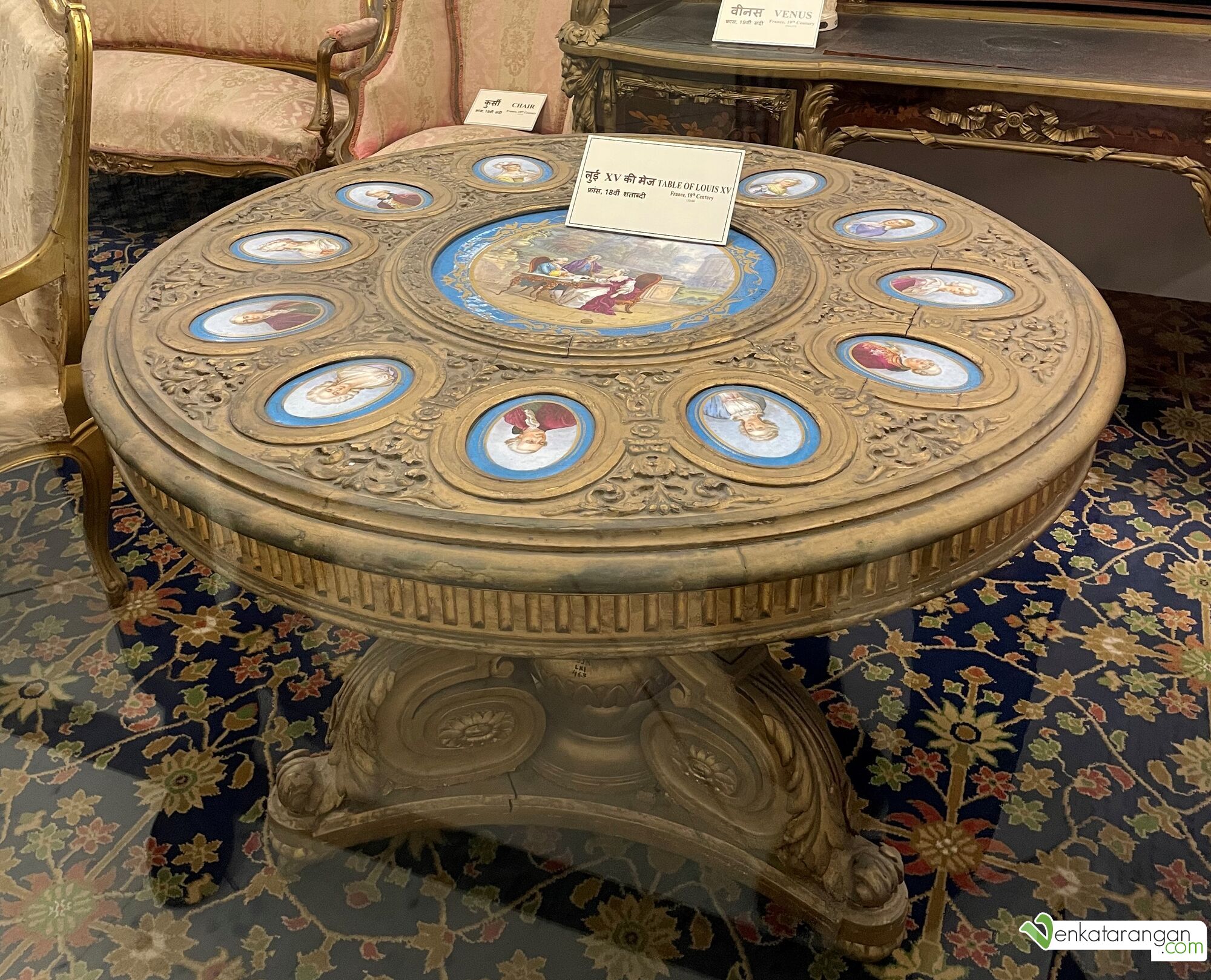
The table of LOUIS XV, 18th Century, France

Look carefully at the bottom of the piano stool, you will find crystal spheres ussed as wheels which provide multi-directional movement
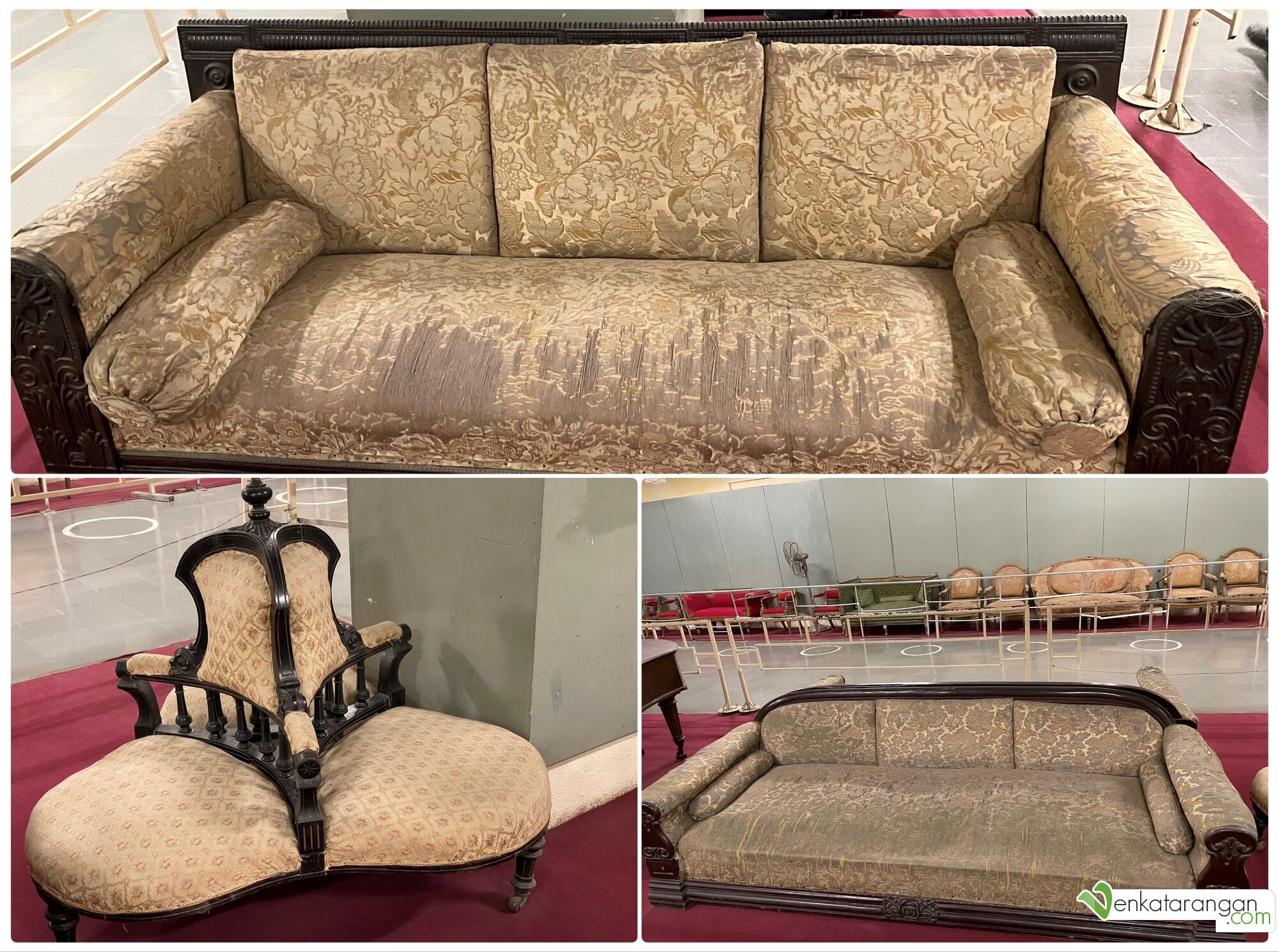
Royal Sofa, the cloverleaf sofa (popular to discuss gossip)
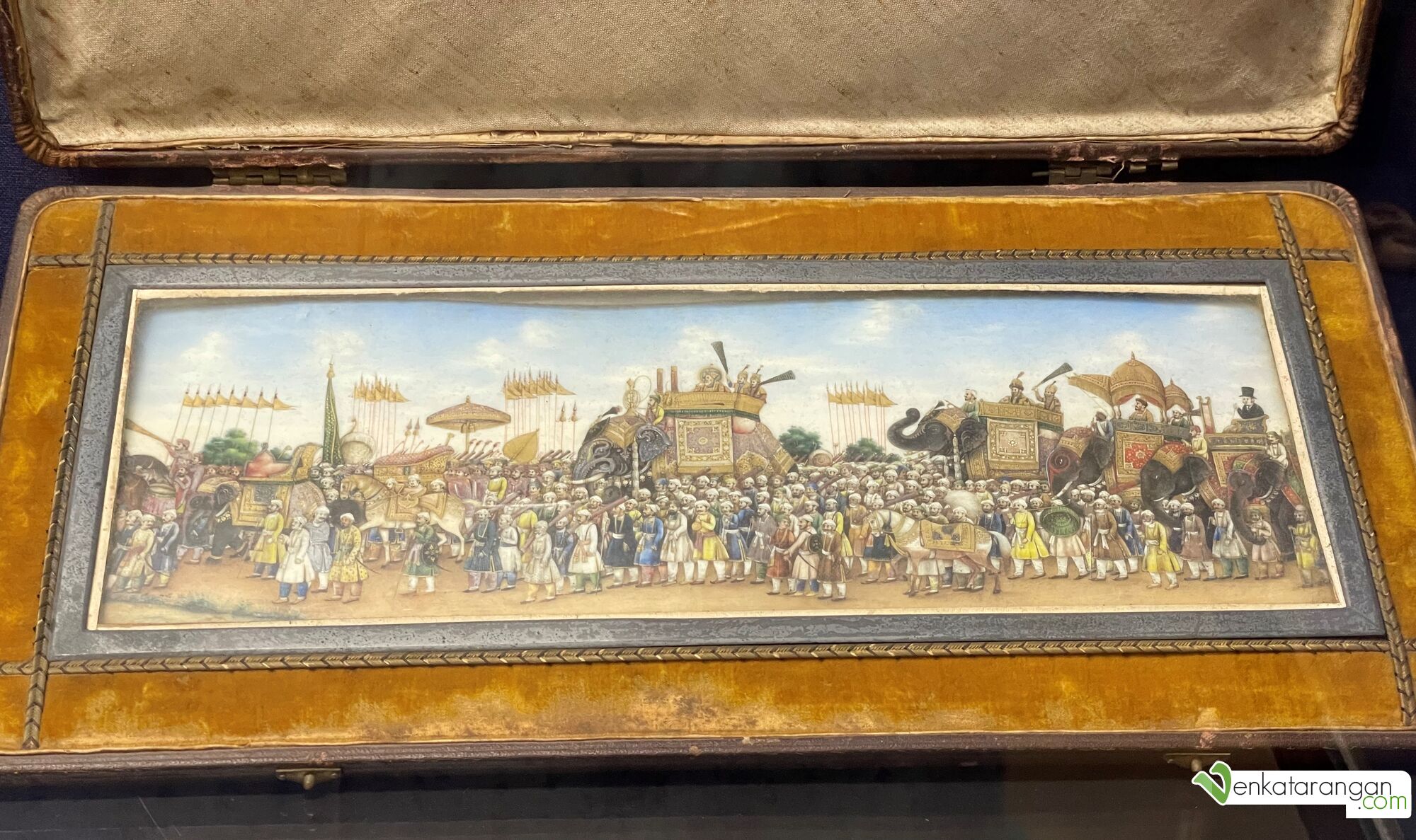
Painting showing the royal parade, each of the face shown here are unique and distinct
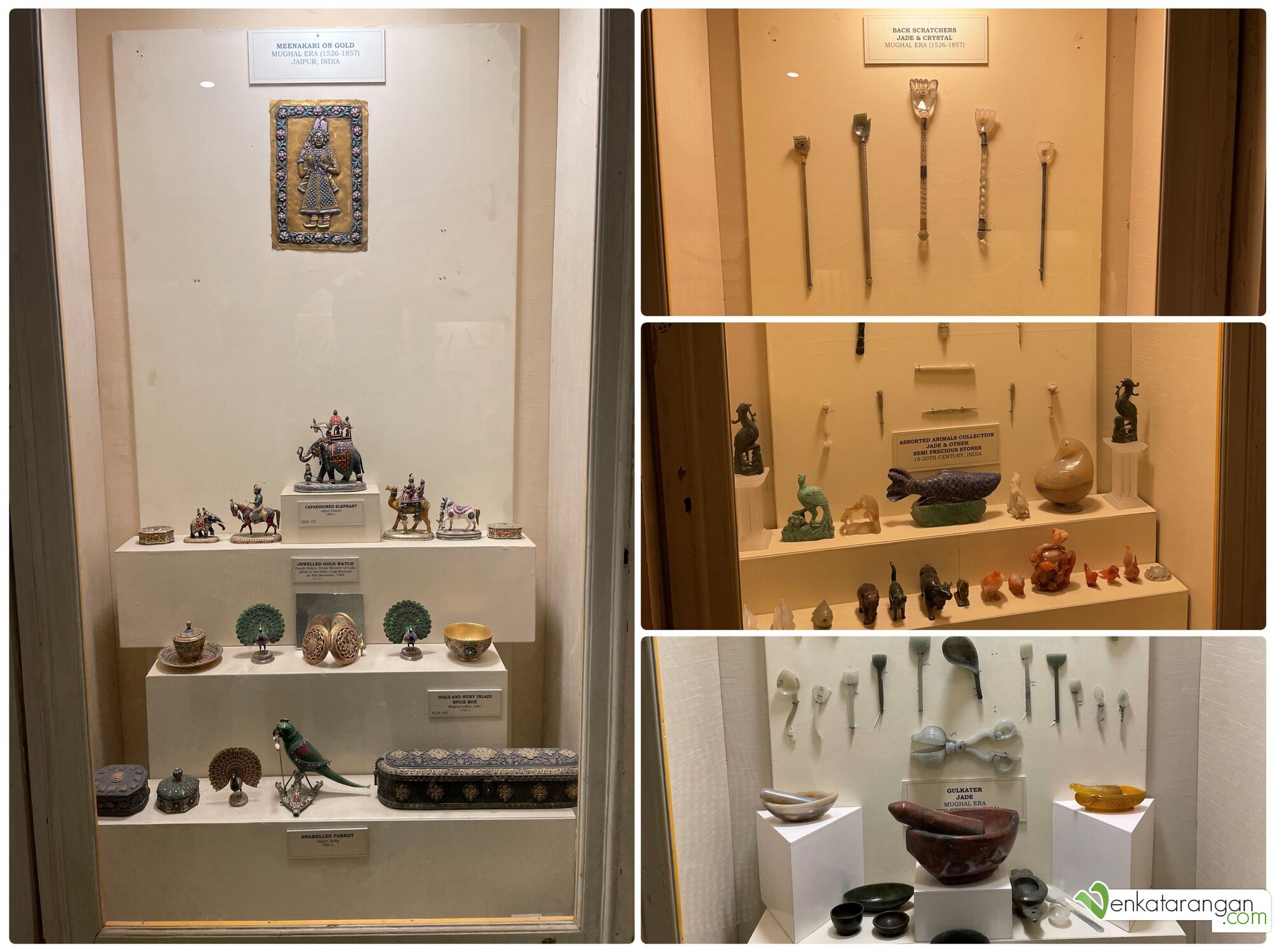
Mughal era Meenakri on Gold, Caparisoned Elephant, Enamelled Parrot, Jade & Crystal Back Scratches, Jade medicine bowls, Jade and other semi-precious stone animals collection
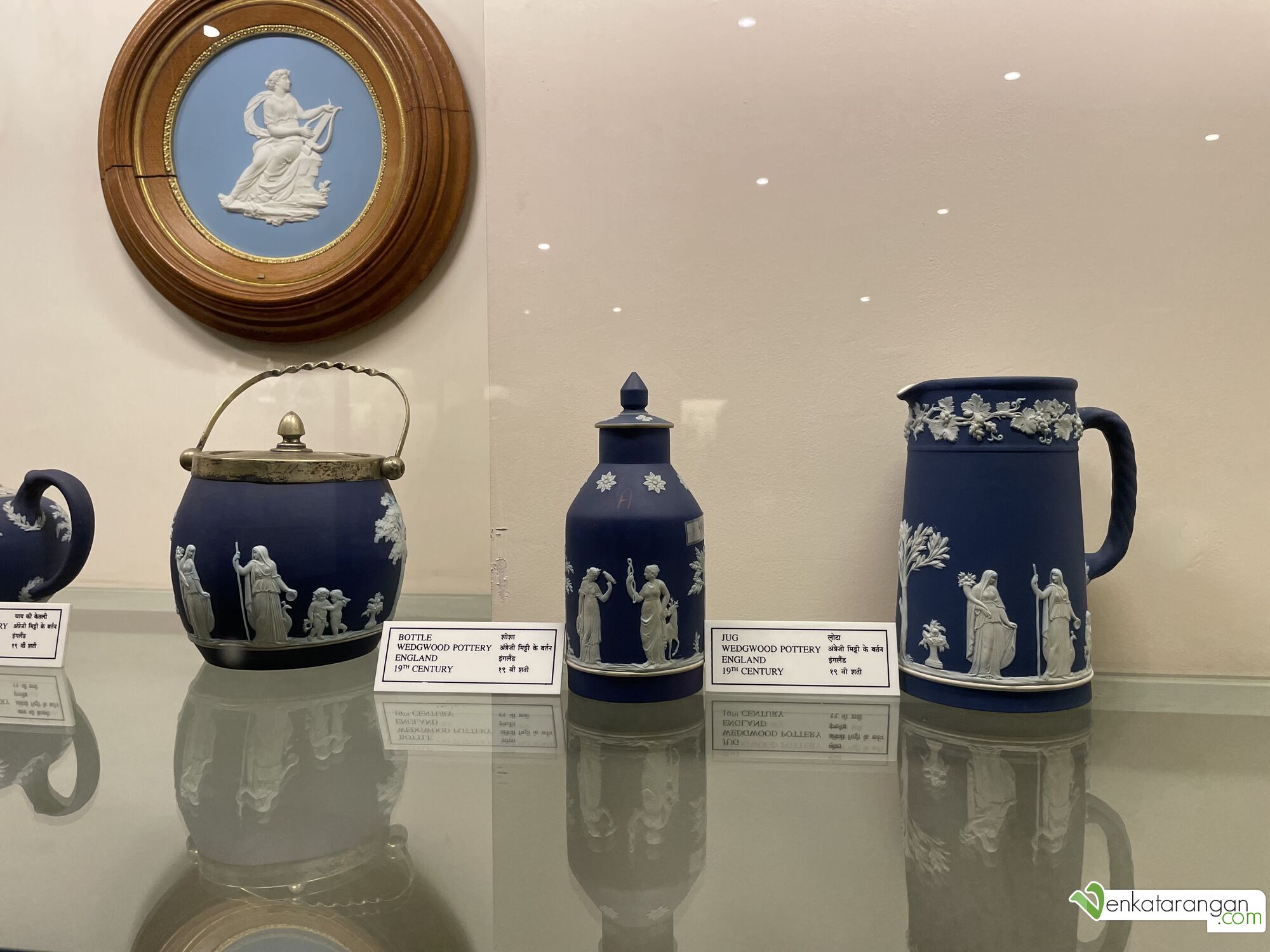
Jug and Bottle – Wedgwood pottery from England, 19th Century
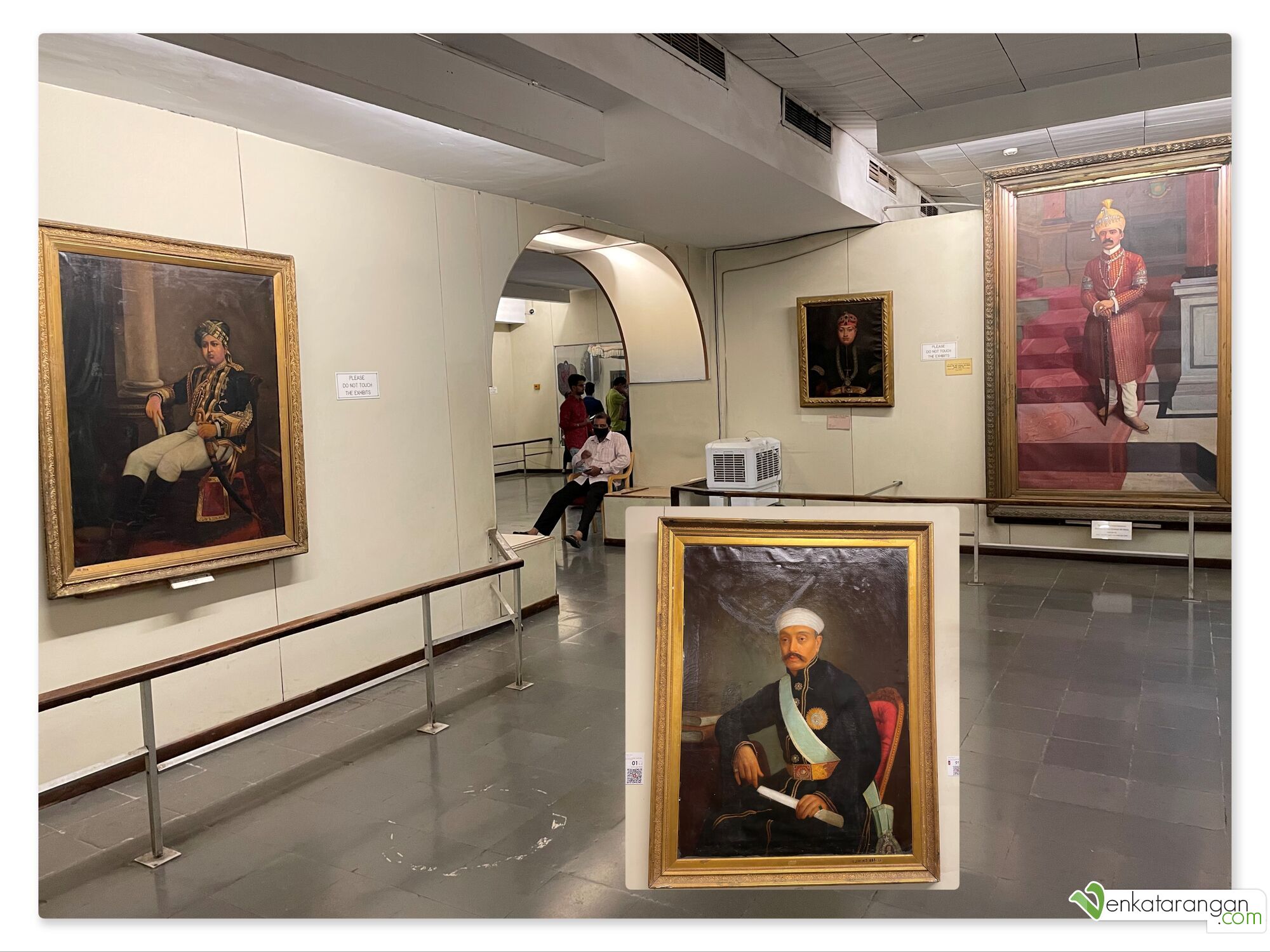
Salar Jung family potraits
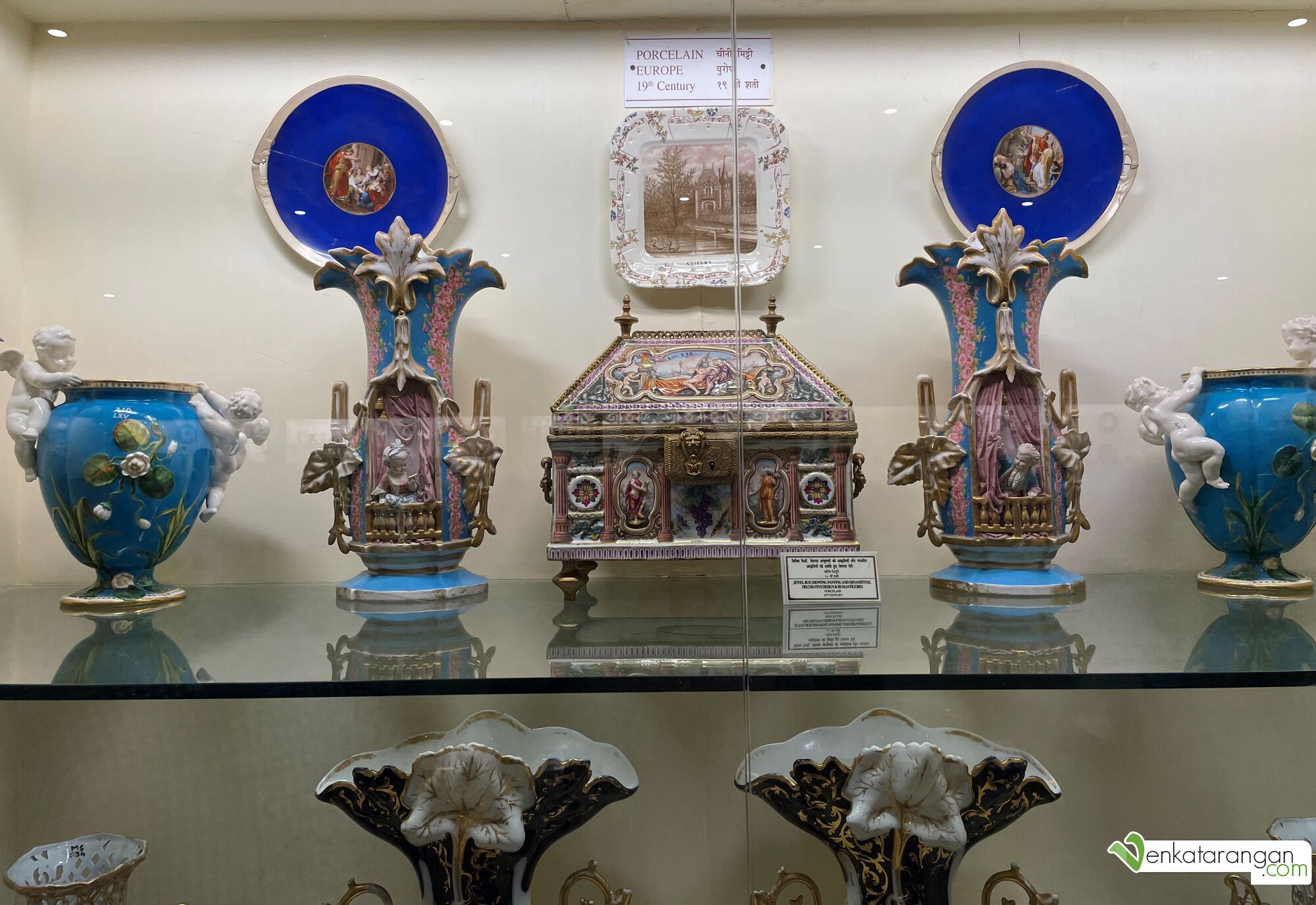
19th Century Porcelain from the Europe

Plate sevres porcelain, France, 1804 to 1808 A.D.
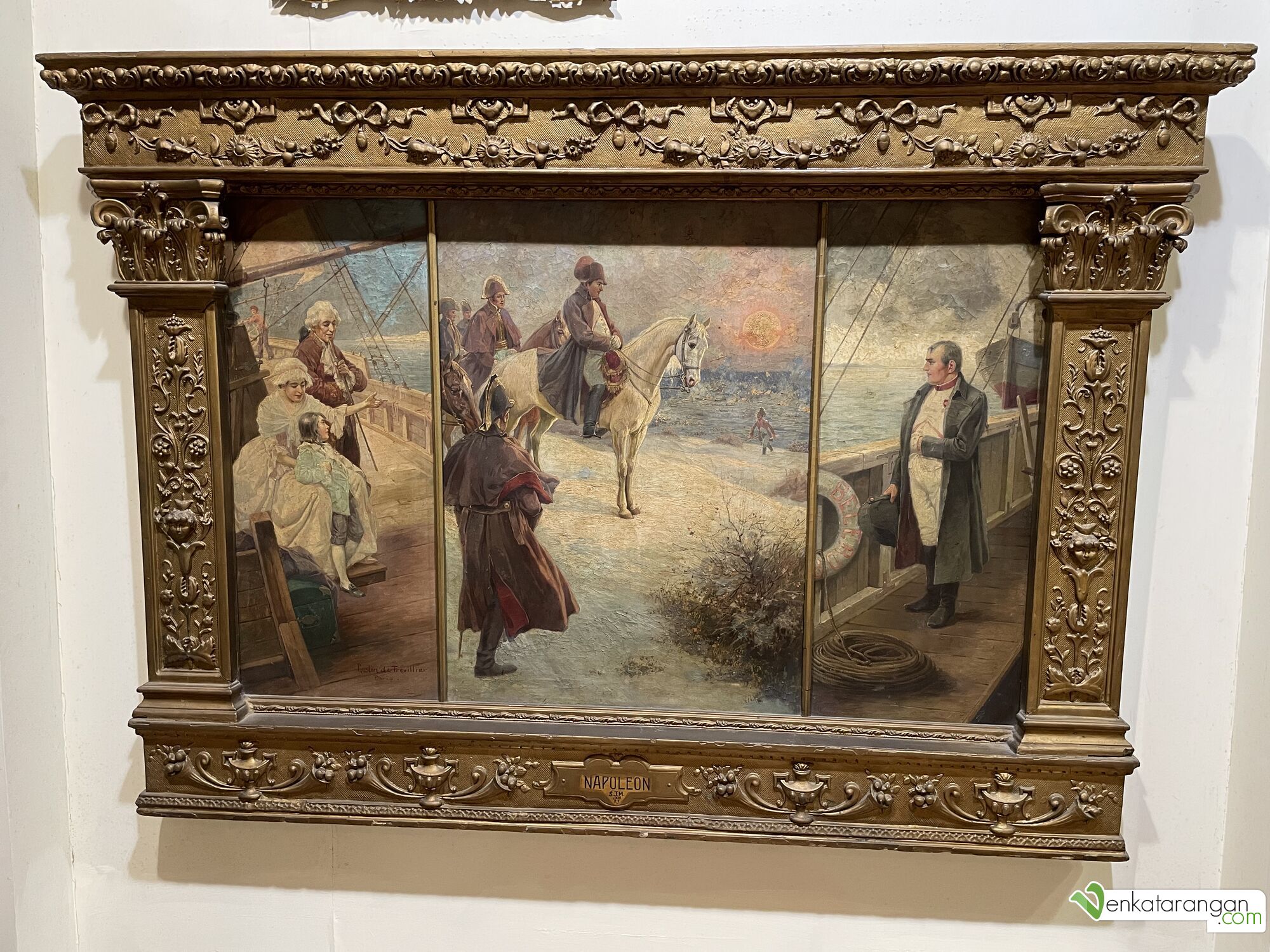
Portrait showing different stages in life of Napoleon Bonaparte
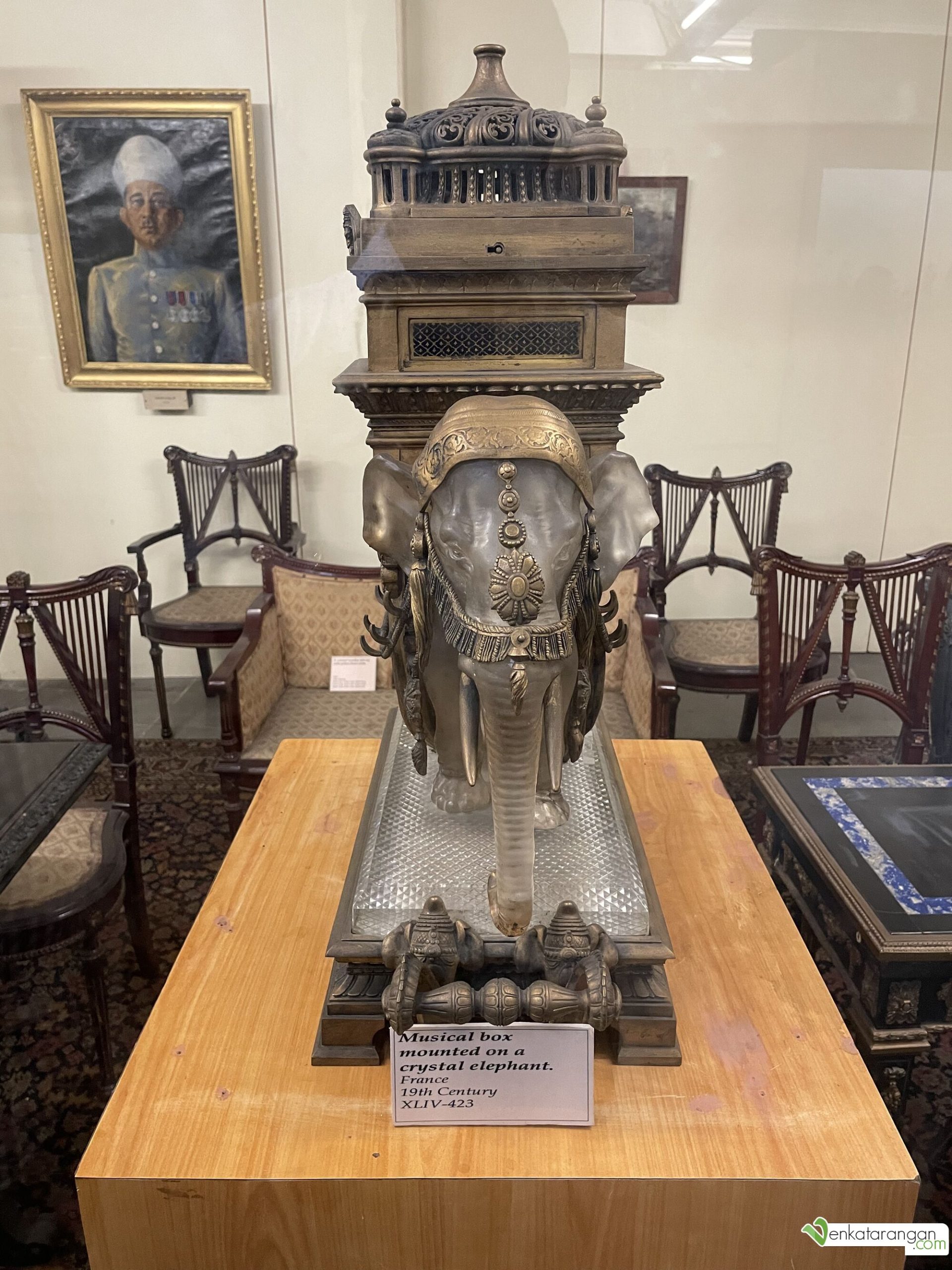
Musical box mounted on a crystal elephant, France, 19th Century
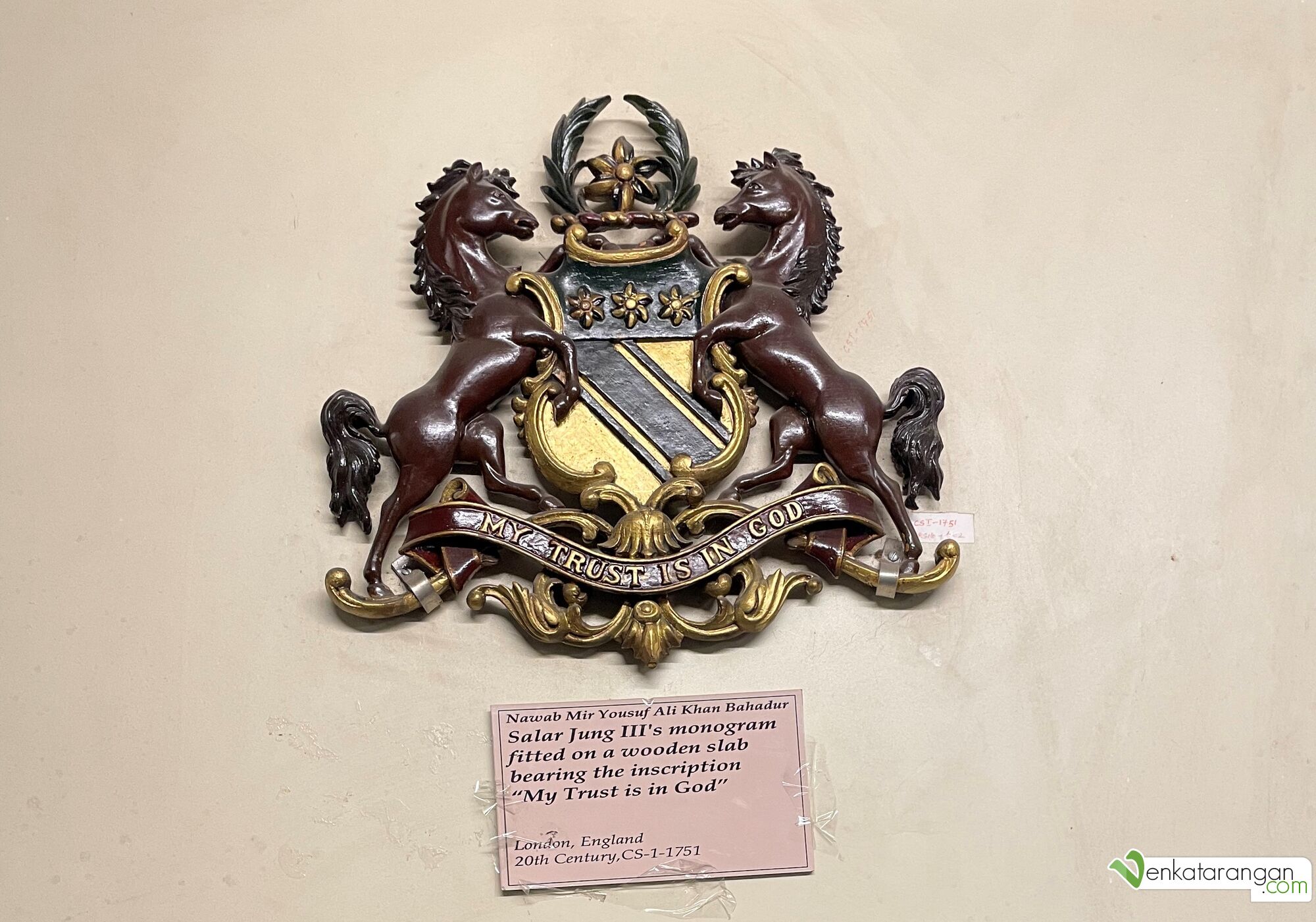
Salar Jung III’s monogram showing Horses

Various models of clocks, grandfather clocks, and an alien figure shaped clock, and a weather measurement clock

Replica of the throne
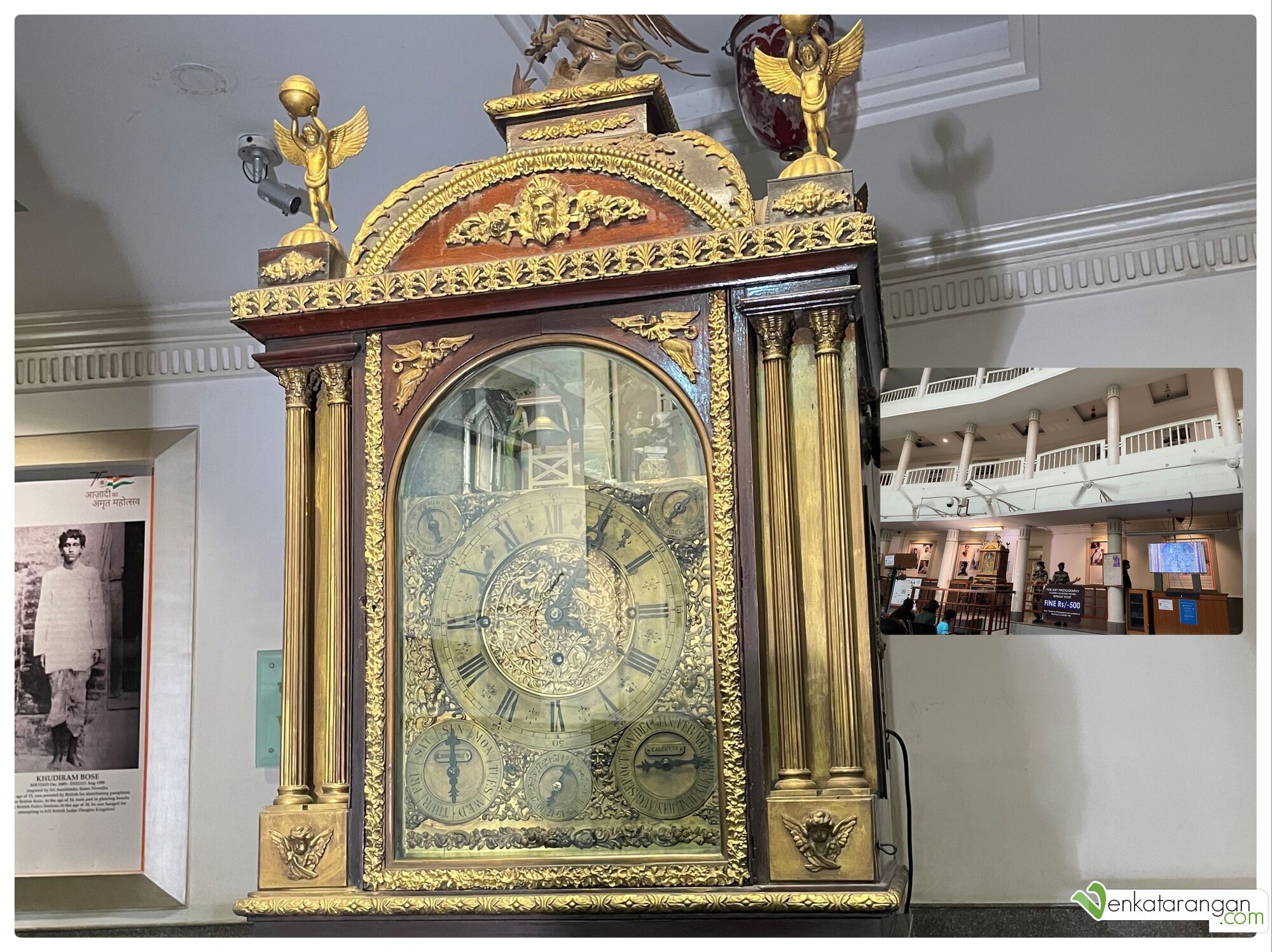
The musical clock which Salar Jung III bought from Cook and Kelvey of England – with over 350 parts brought seperately and assembled in India. Every hour, a timekeeper emerges from the upper deck of the clock and strikes a gong as many times as it is the hours of the day.
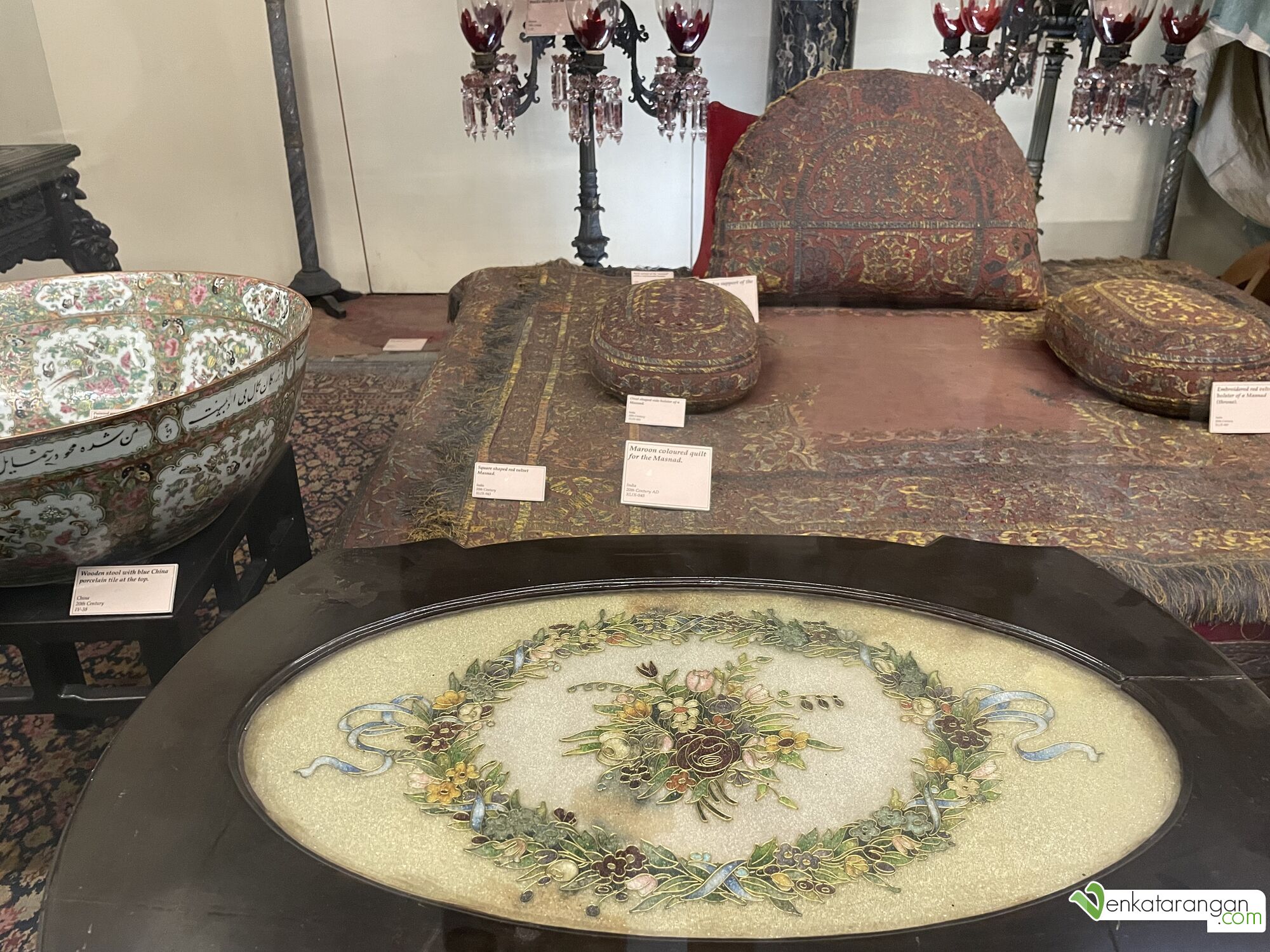
Intricately carved table with gold lines
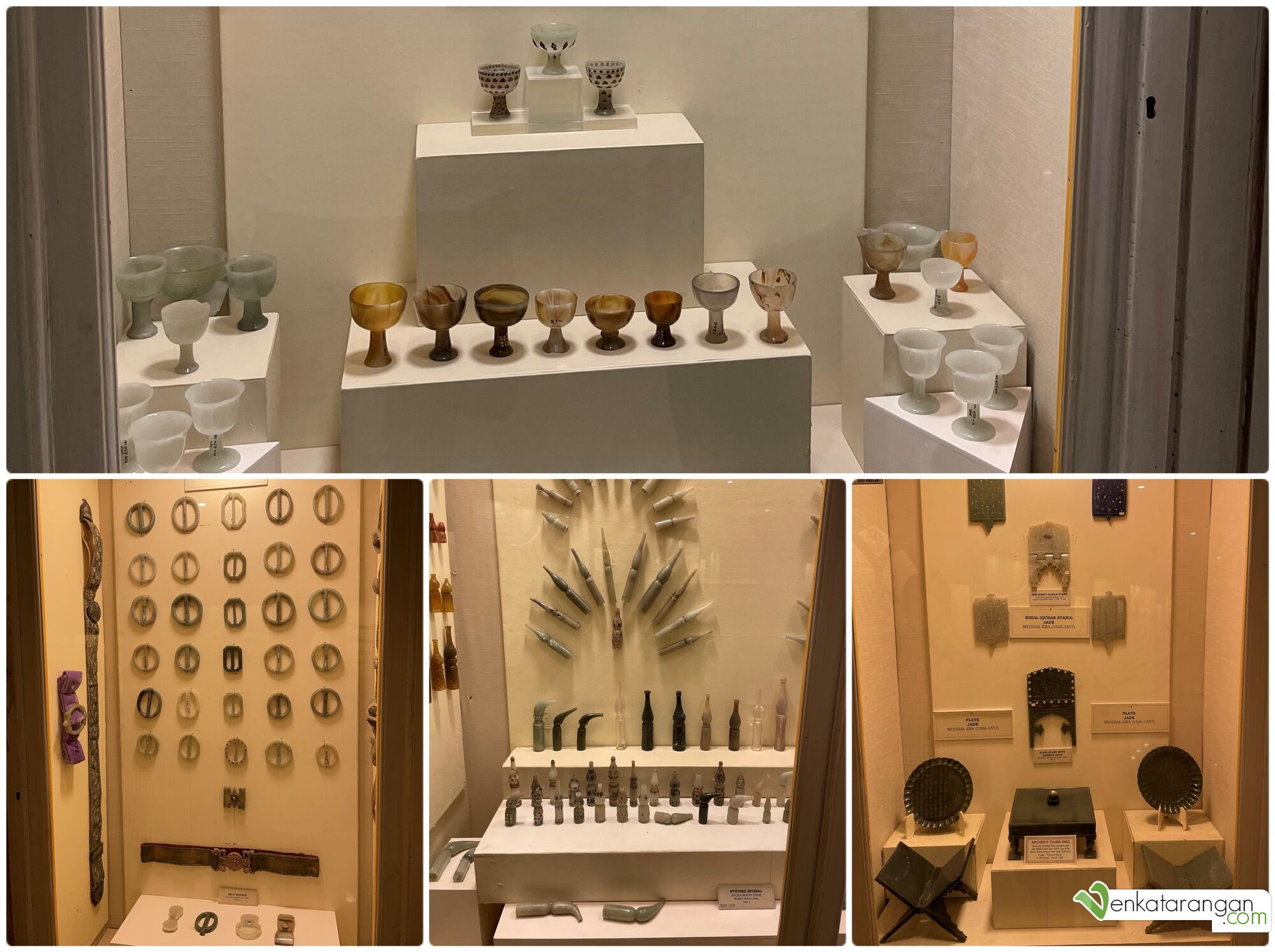
Mughal era Jade medicine cups, Jade Belt Buckles, Jade Huqqa mouthpiece, and Jade Rihal (Holy Quran stand)
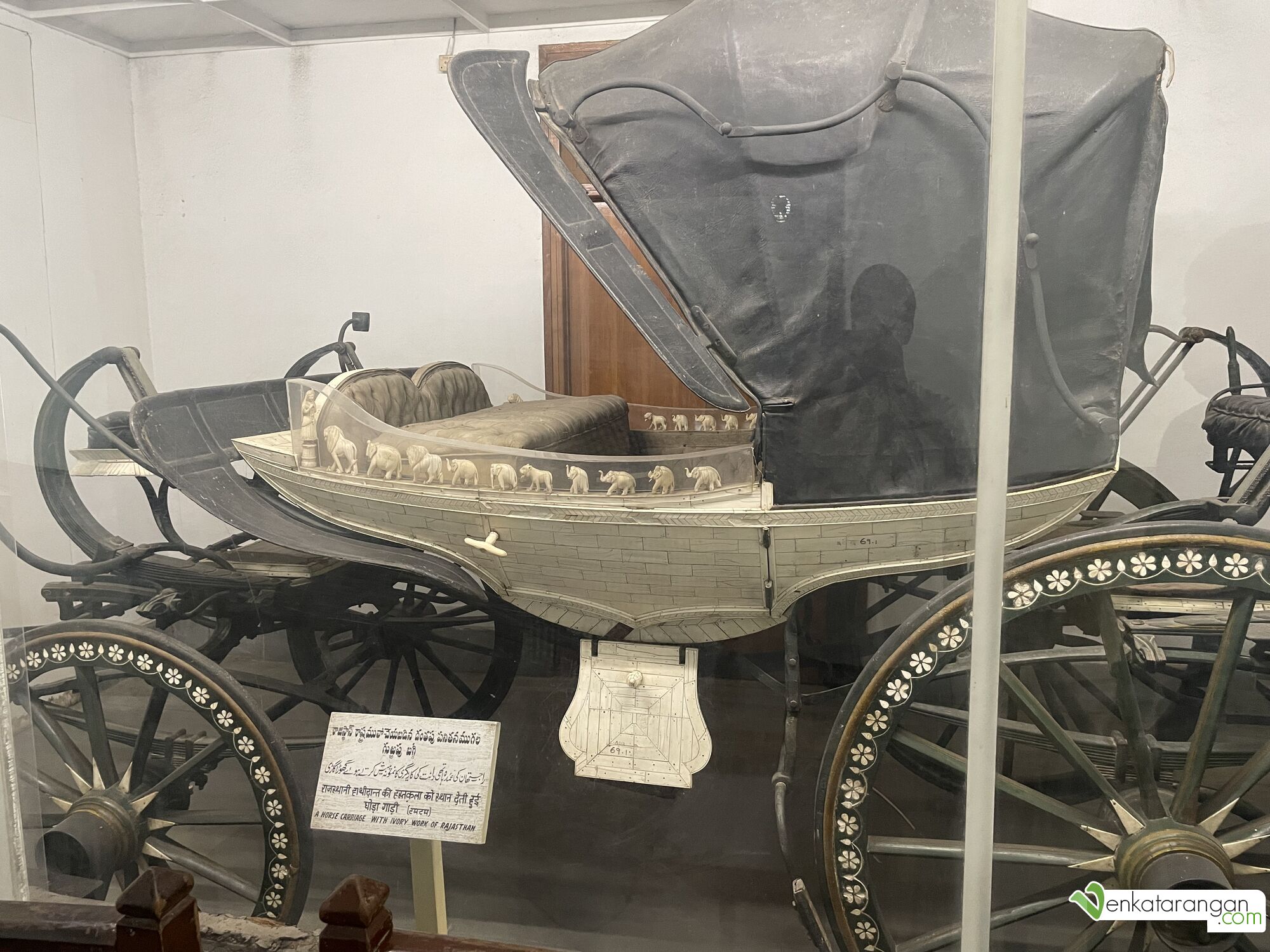
The Ivory carved horse carriage gifted by the first President of India Dr Rajendra Prasad to the museum
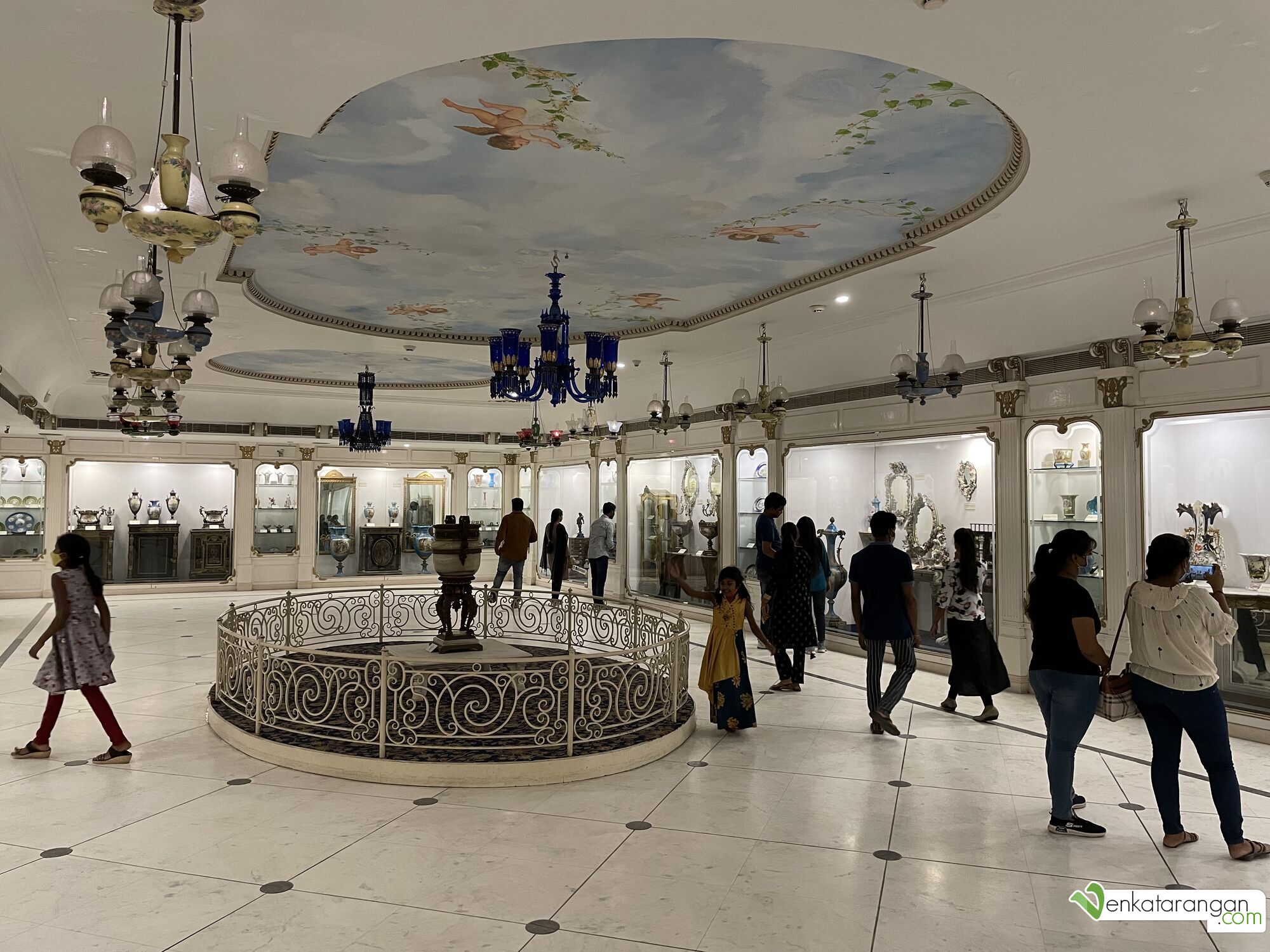
Porcelain collections, look at the beautifully decorated sky painting on the ceiling
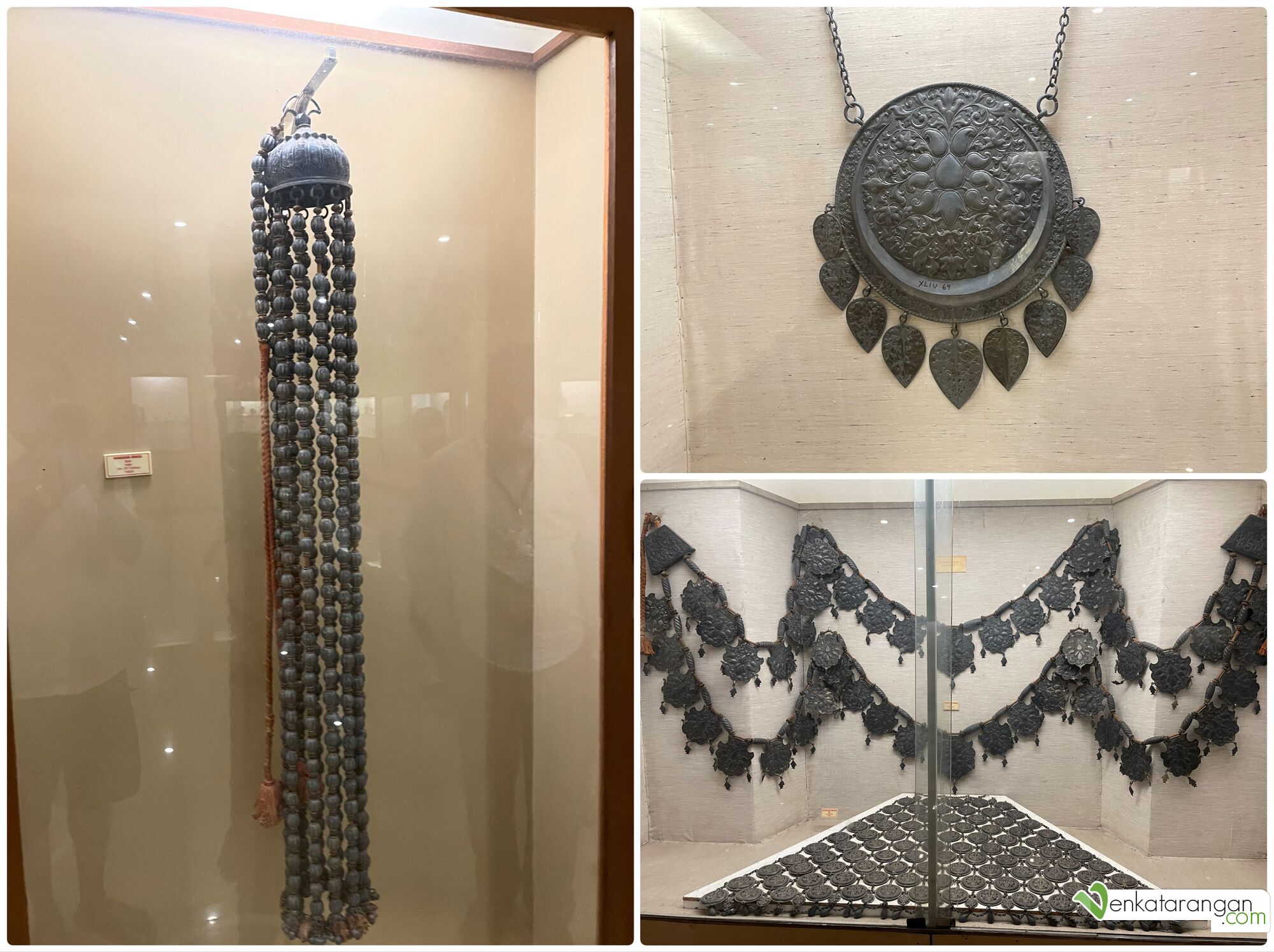
Even the elephants in the fleet of the Nawabs wore jewellery

Monalisa (copy of Leonardo Da Vinci), Madonna with child Christ, and the 19th-century wooden “double sculpture” called Mephistopheles and Margaretta
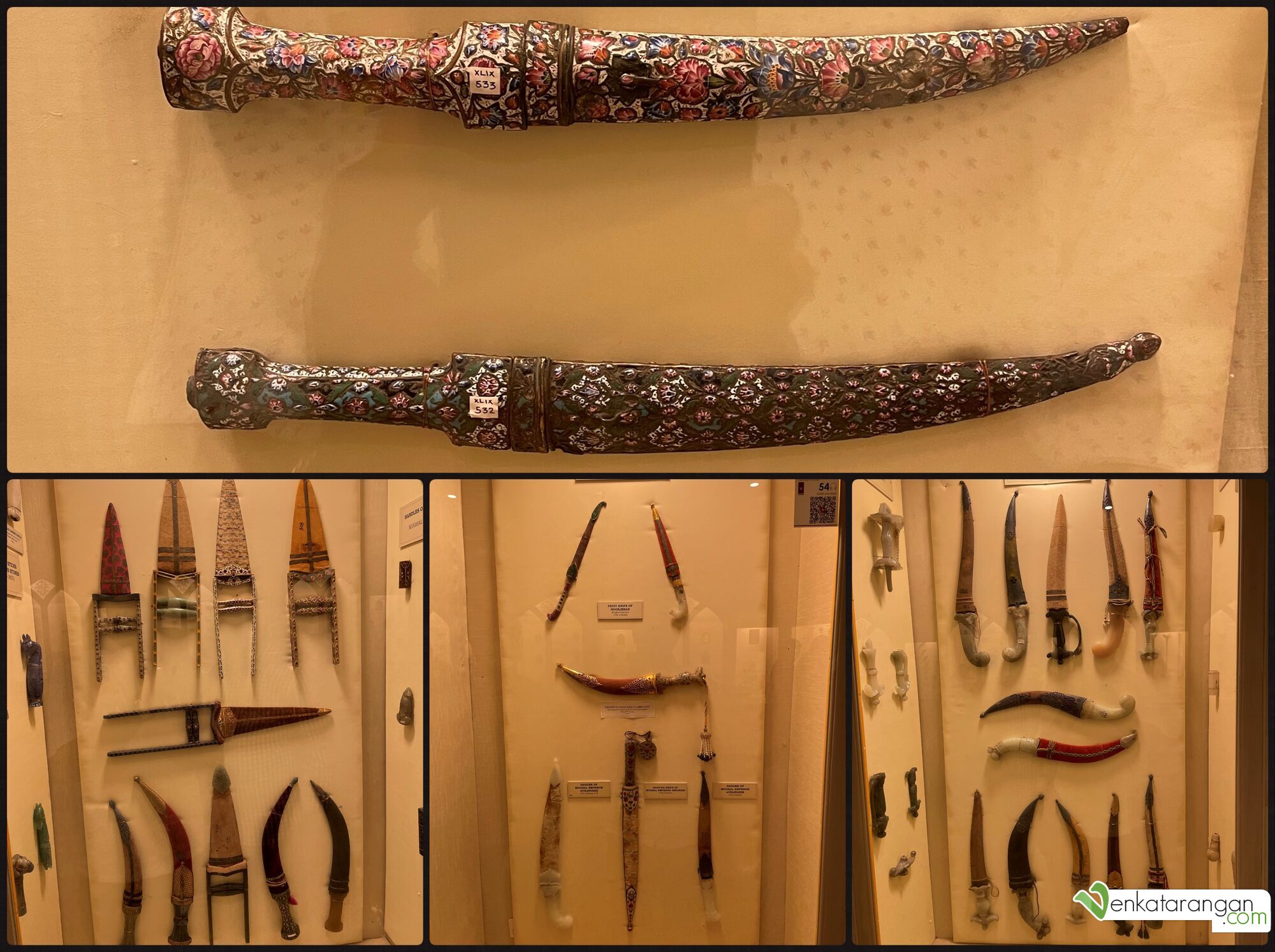
Decorative Daggers in Jade hilts, Mughal era daggers
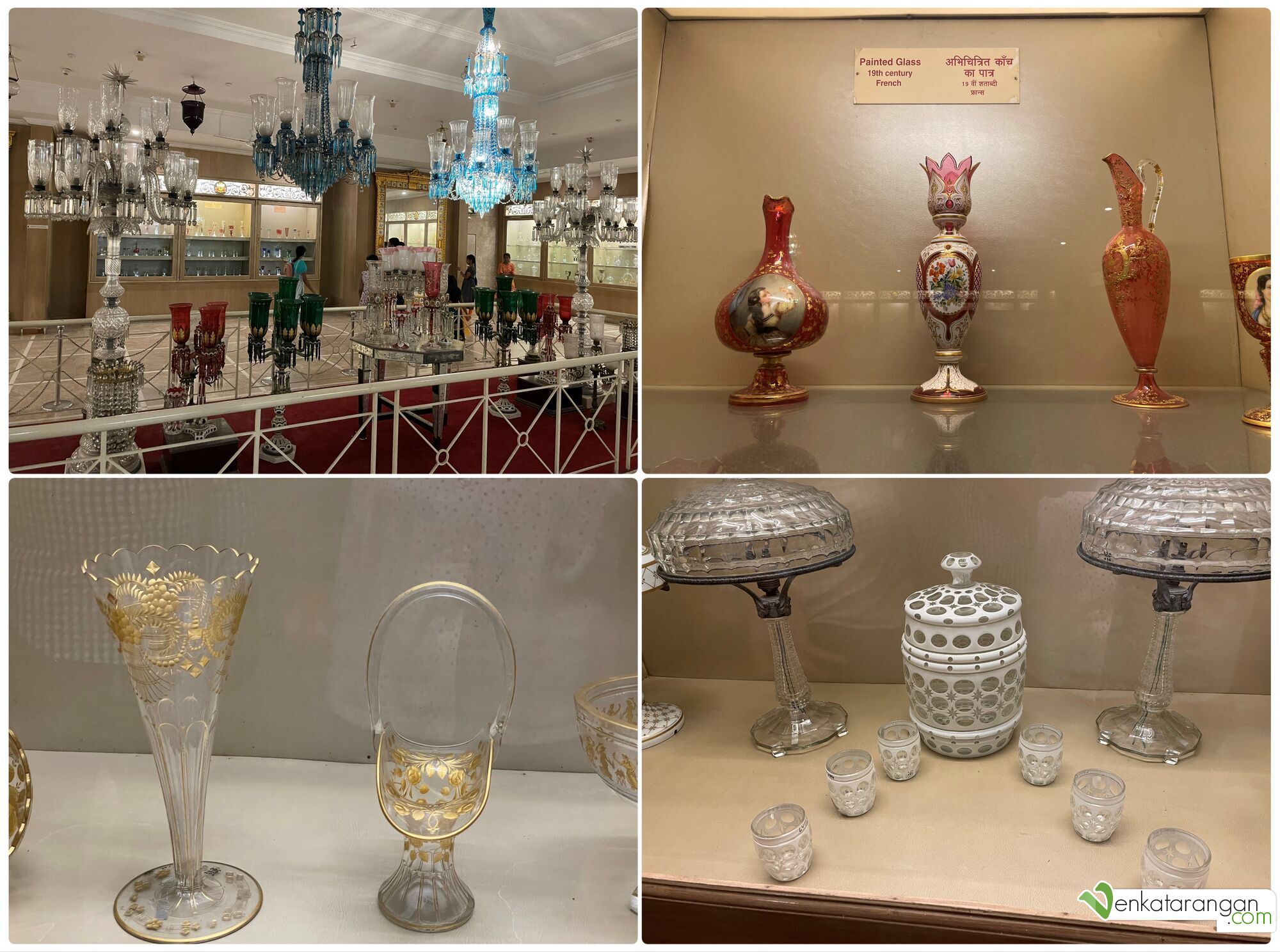
European crystal collection
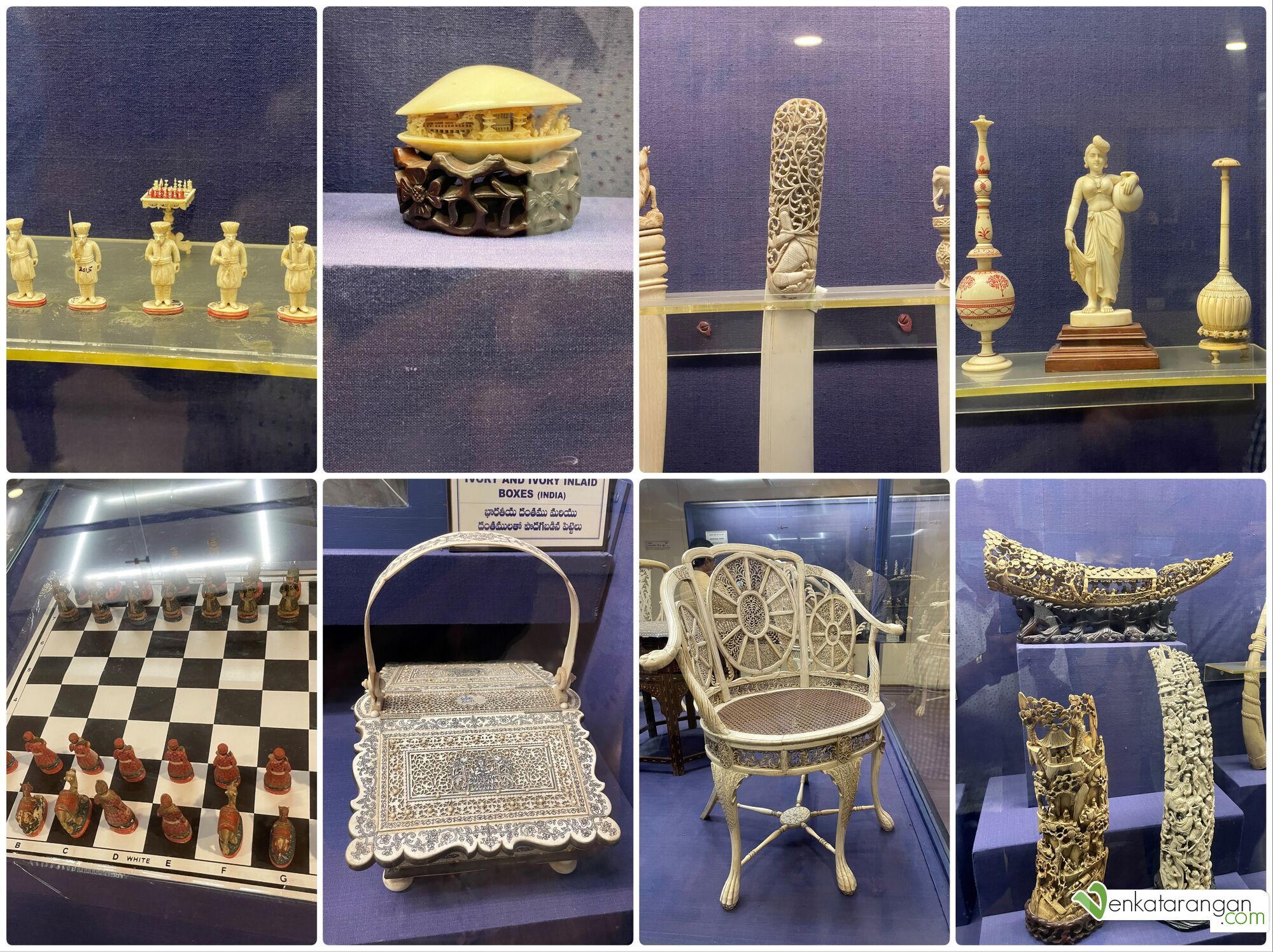
Ivory collection – Chair made of ivory, chess pawns made in ivory, knives made in ivory, ivory inlaid flower box, Ivory doll of Kerala lady
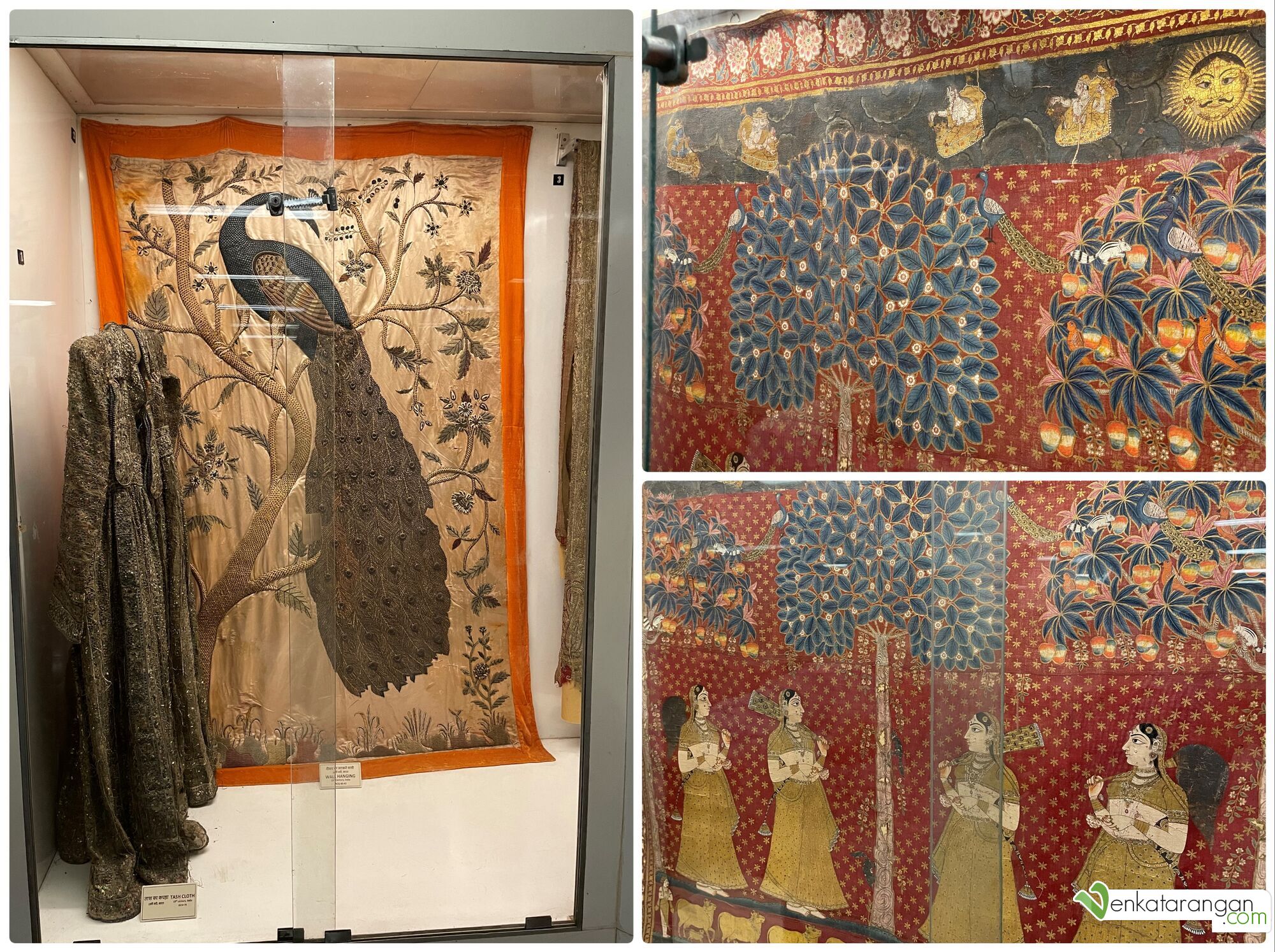
Peacock design wall hanging, and carpet with image of Hindu Devas and Apsaras’
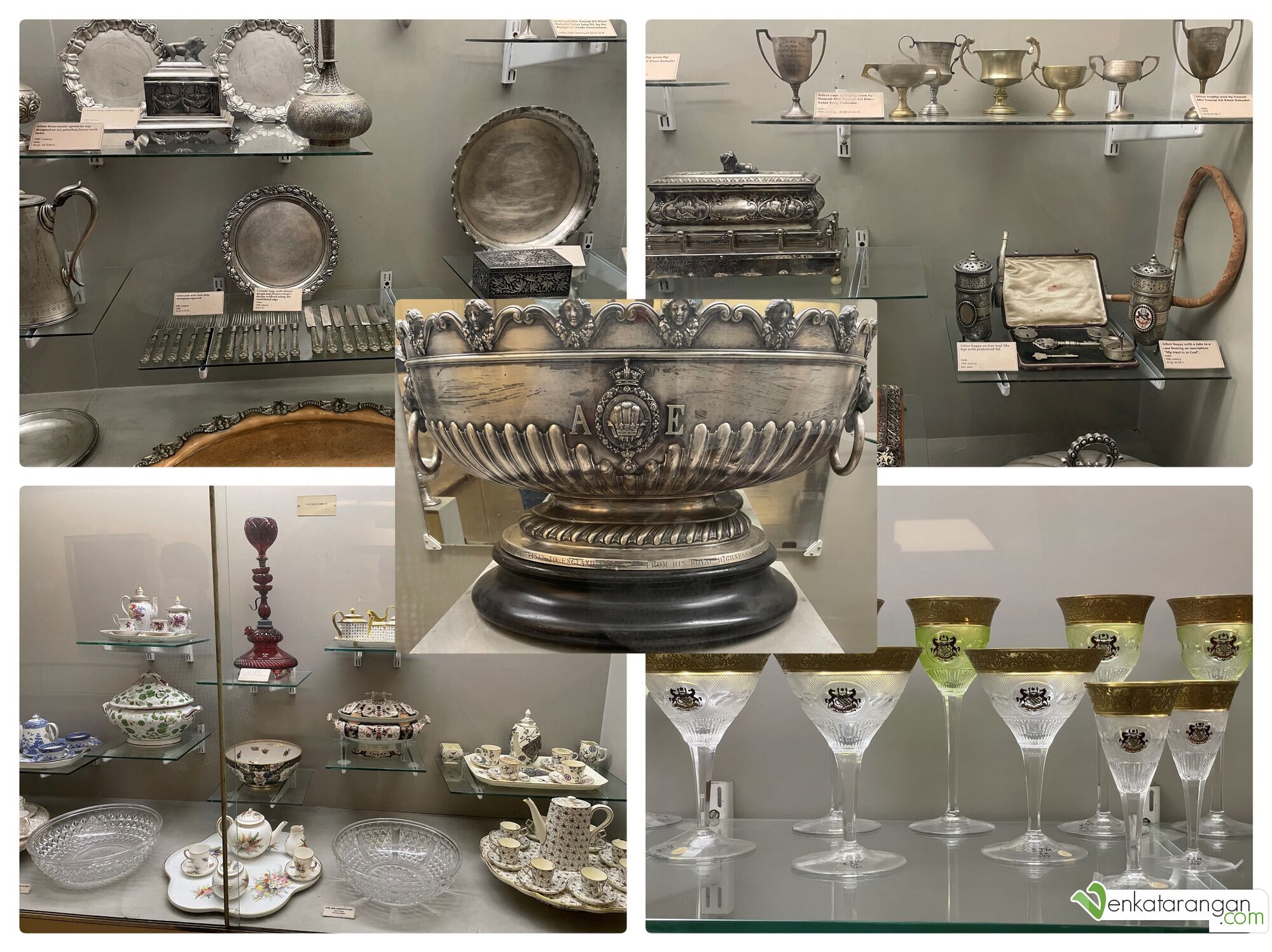
Silver collection


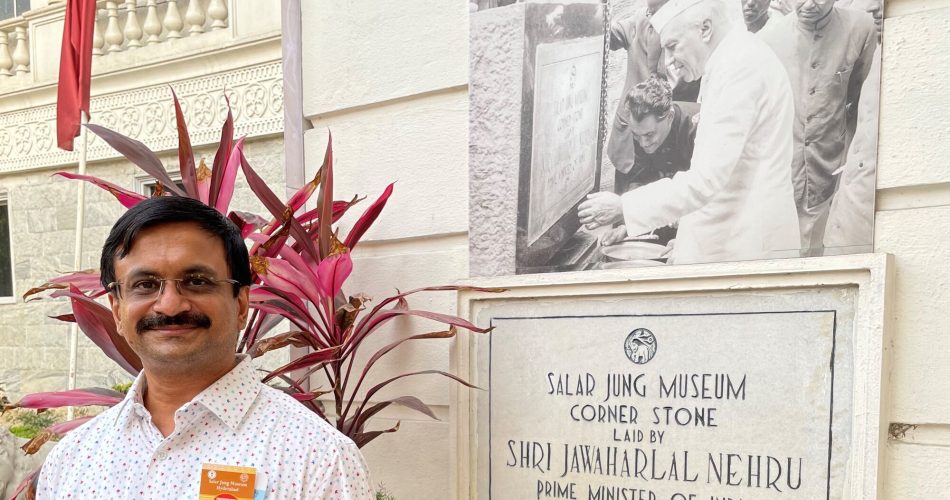
Comments